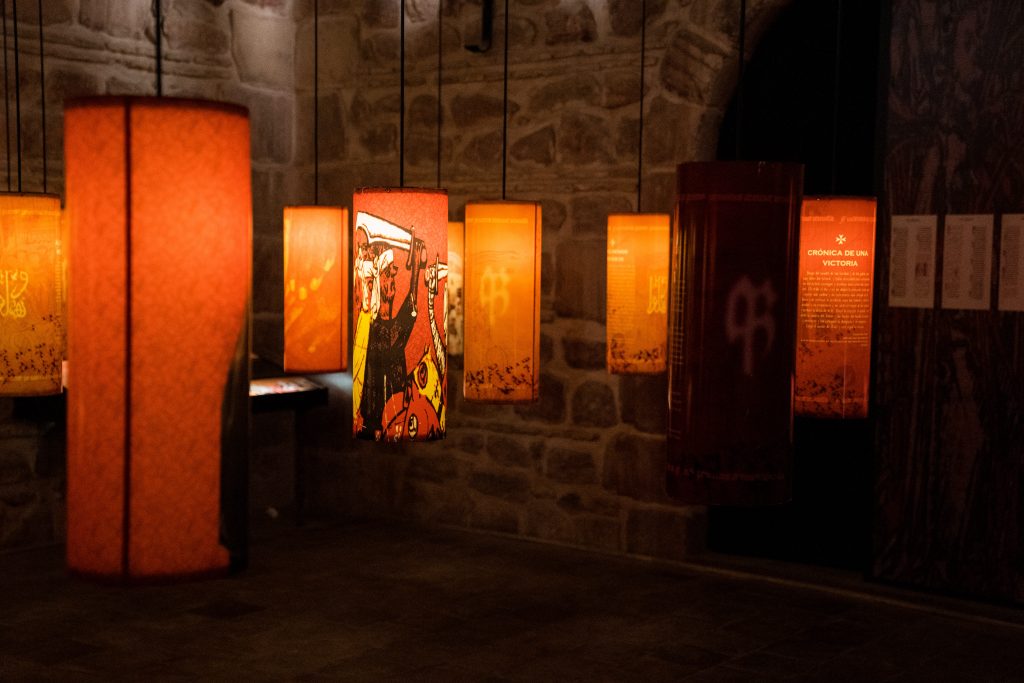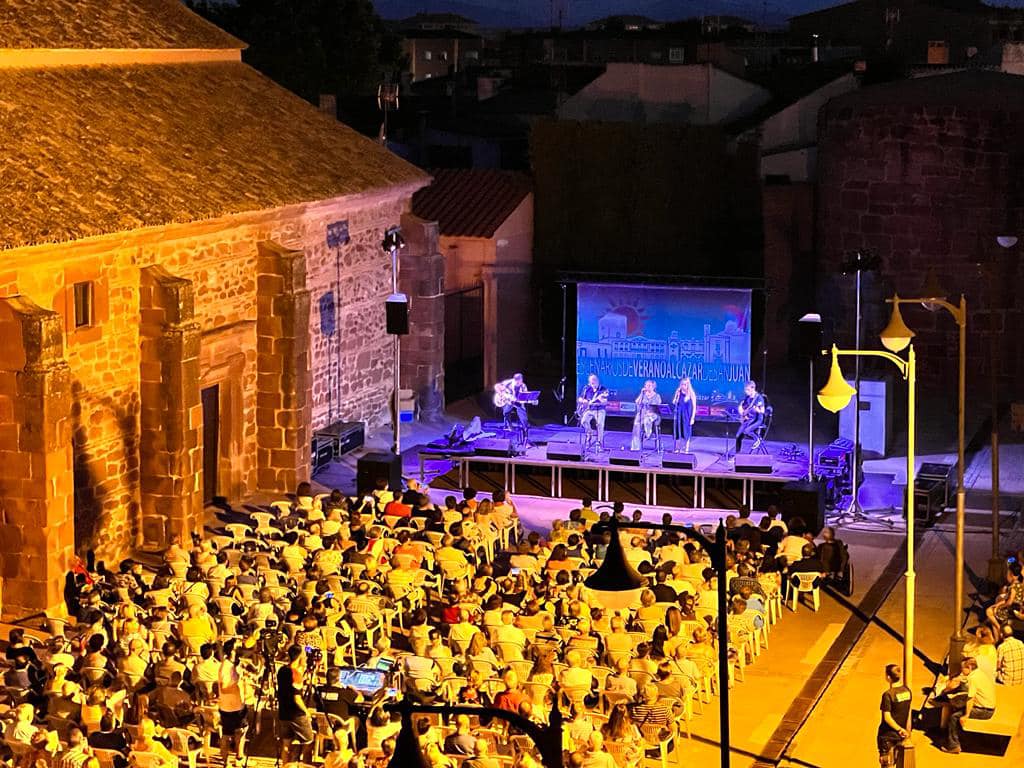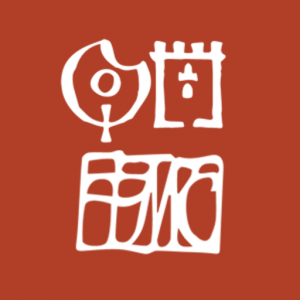Celebrated the month of December for more than two centuries, it appears with a first documentary reference in the dictionary of Hervás y Buendía of 1899 with a note on the carnival of Alcazaba, referenced in a document of the Diocesan Archive of Toledo. There they talk about the celebration in Alcázar de San Juan of one of the popular parodic parties of the end of the year, parties that since the Middle Ages have been documented throughout Spain.
Throughout the 19th century Carnival is celebrated in Alcazar at different times in February or December. Between 1851 and 1868 the new local society gathered around the Casino Principal, programmed Carnival dances in the generalized month of February directly related to Lent. But it is from 1871 when it is known that it is the town who ends up organizing the carnival dances in December and not in February, which makes the popular carnivals that were celebrated in the Altozano to be proclaimed as the only ones and as the popular festival of Alcazar de San Juan par excellence.
The Carnival was declared a “Festival of Regional Tourist Interest” in 1991 and it was in 1993 when the local artist Mr. Isidro Parra proposed to give the cycle a more personal name, inventing the word “Carnavalcazar”, which has remained since then as a personal seal of the festival.
With the creation of the Local Federation of Peñas and Cuadrillas appeared the first groups such as: La Panda, Remendaos, El Tiznao or Tendido 5 among others, making with their work and illusion that Carnavalcázar began to take shape. Later, other groups such as Las Peñas Santa María, Alces, Zarabanda, Porvenir, Moñigones, Los Zoquetes, La Bota, El Capote, Los Manchegos, formed a very important social network around the festival. The last incorporations were the Asociación Cultural de Moros Cristianos “Al-kasar”, Los que vamos quedando, Trotaviñas, El Mono sin pelo, Pradera, Pequepeña, Daira, Isis, Asoc. Dance Alma Mª García, the Asoc. Cultural Spirit Dance and A Compás. Not all of these groups are still active, but they have been a fundamental part of the history of Carnavalcázar.
Also worthy of mention are the traditional murgas such as Los Reumas, Cojonudas, Chiquetes, Hilopita, as well as those who have been taking the baton over the years as Los que vamos quedando, El Rascayú, La Rayuela, Los Fusionaos, Murga Economía Sumergida, and Pa Mear y no echar gota, who with their irony make a funny social criticism to the sound of the turutas, the whistles, the guitars and the boxes. In addition to the local murgas, this festival is usually accompanied by groups from the region and the leading chirigotas of Cadiz.
In 2018 was declared a Festival of National Tourist Interest, thanks to its consolidation in the festive agenda of the province and the region as a unique and original festival in the acts and in the celebration of the festival, because although its traditional dates are 26, 27 and 28 December, given the extensive programming usually begins the weekend before the school Christmas vacations, so that the smallest of the city have their own space through the party of Election of the bishop and his great parade.
Within the program, it is worth mentioning:
– Carnavalcázar Proclamation and presentation of the Poster. This is the first activity in which the program that lies ahead is announced, and although originally the Federation of Peñas was in charge of it, with the passage of time this task is performed by people who have developed an intense activity in the carnival within a totally institutional framework.
With respect to the poster, many artists have been creating the collection of posters through which works by painters from Alcazaba have been reproduced, such as Parra in 1993, Vaquero 1994, in 1996 a reproduction of a painting by Ángel Lizcano (1846-1929), Áureo 1997, Alfredo Martínez 1999, Ángela Alaminos 2001, Xaro 2002, J. A. Román 2003, A. Fernández Molina 2005, Herreros 2009, Patricia Román 2011, Bruno Redondo 2013, among others… serving as iconography for the whole cycle.
– Hanging of Peleles: This activity takes place during a whole day, usually the day after the pregón. It consists of making a doll of a fungible material (cloth, wood, cardboard…) that will be hung from a balcony or window to be seen by all the neighbors of the city and that will be carried by the king of the dolls the same day of the parade of the Mascarita Popular, to be burned the day of the Burial of the Sardine along with the same. On the same day, visitors are offered an almond pastry called “rosquillo-pelele” since the pastry has the same shape as the doll of the saints and a glass of mistela, only for those of legal age.
– Children’s Carnival: The smallest of the city have always had their own parade, presided over by the local figure of the Obispillo in memory of the children’s games of the altar boys who wanted to simulate the ecclesiastical power. The turning point for this parade was the year 2008, from which, from the Department of Festivities involved schools through their AMPAS, as well as other children’s organizations from which has been developing the development and creation of costumes, floats, etc … The parade is held the weekend before the Christmas vacations and thanks to the effort and work of all participating groups, has managed to have the same showiness as the Grand Parade of Comparsas.
– Grand Parade of Comparsas: Since 1997 the carnival has a stable structure and an important set of prizes. Many have been the peñas that have been going through this parade and have been giving the baton to others.
Currently this parade is an attraction for many carnival clubs throughout the region and beyond, as the dates lend themselves to end their carnival event of the year with participation in our city.
– The popular masquerade: The masks that during these days are in the streets, are summoned in a parade held the day before the Burial of the sardine and that begins after the manteo of the skins before being grouped to be burned in a ritual to end the bad of the cycle that closes the carnival, along with the sardine. Participation in this activity is presented in different categories: individual masks; couples, trios, quartets and groups. This parade is gaining strength over the years and always has its faithful masqueraders who leave from the Plaza of Spain to the Emilio Gavira Theater, where the awards ceremony takes place.
– The murgas: The murgas have been part of the life of carnivalcázar throughout his career varying the scenario according to the time, being so in the early years from 1991 to 2015 were held in the sports pavilion Diaz Miguel, then went on to be held in the Crisfel theater, and finally is the Emilio Gavira Theater who receives the humor, music and art of the participating local groups, as well as guests from the region and Cadiz. Tickets usually have a symbolic price and since 2022 all proceeds go to an association whose purpose is solidarity.
– The concentration of corrosion on the stretcher tables: It was born with the idea of bringing to the street those meetings around the tables of any house in which the nonsense, jokes, jokes, games of cards, dominoes, tasting the rosquillos, mistela, polvorones, and above all the conversation and friendly and family reunion is the main ingredient of this meeting. All this under the costume, the popular mask and the staging of the carnival. The theme year after year chosen by most of the participants was the attire of “grandmother manchega” and whose predominant color was black, so it was decided to pass it to the Duel of the Sardine on the day of the Burial of the Sardine, resulting in a very fun and enriching activity in the act of mourning resulting in carnival spaces for personal mourning, between the official mourning and the exit of the burial, giving mourners the opportunity to eat in the streets and regain strength and humor to undertake the triumphal moment of the carnival with the burial of the sardine and its final burning.
– The Burial of the Sardine: Among the most popular activities is the burial of the sardine that closes the season. For many years it had a fundamental protagonist, the Cuadrilla Tendido 5 that was in charge of its organization until 2006, and fixed in the practice of the custom, all kinds of procedures, itinerary and system of collaboration of the catering establishments of the same. Since that year, the staging in the Mourning has been varying, passing through the cute characters familiar with the Sardine mourning his loss of the hand of the Company The Hairless Monkey, around which joined the mourners who came to leave their signature as a sign of respect and to taste the typical almond paste in the shape of sardine, elaborated for the occasion and the mistela, as well as the current Mourning offered by the Commission of Festivities that receive all the mourners who come to show their condolences in front of the image of the sardine. In the afternoon, the Burial Parade is held, which ends with the cremation of the sardine and the popular peleles in the bullring, where a “gran sardinada” is offered, where the public tastes the sardine roasted on the embers.
– Ciclalgata: To make a little history, in the late nineteenth and early twentieth century it was quite common to organize bicycle parties, which were called “ciclalgatas”. In these festivities that used to coincide with carnival days, the cyclists wore their bicycles decorated with floral motifs or even a costume.
Within the programming of Carnavalcázar, it can be said that it is the most benjamin of all the proposed activities since it debuted for the first time in 2016 organized by C.D. Pulsaciones Bikes, currently C.D. Alcázar Bikes represented by Pepe Pinar who proposed to recreate this type of parade, in which every year more and more participants join.





